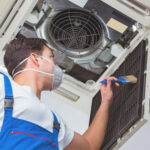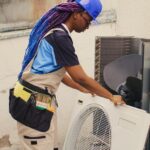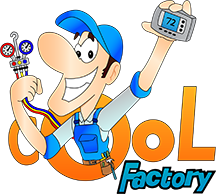
Green HVAC Technologies for a Sustainable Home
Green HVAC Technologies for a Sustainable Home
Sustainable home living is more than just a trend; it’s a conscious choice towards a greener future. One significant aspect of this lifestyle shift is embracing eco-friendly HVAC (Heating, Ventilation, and Air Conditioning) technologies. In our quest for sustainability, the impact of conventional HVAC systems on energy consumption and environmental degradation cannot be overlooked. Fortunately, innovative solutions are emerging to address these concerns. Join us as we explore the world of Green HVAC Technologies and discover how they can transform your home into a more sustainable and environmentally-friendly haven.
Understanding the Need for Sustainable Home Living
In today’s era of climate change and environmental crisis, the urgency for sustainable living practices cannot be overstated. Sustainable home living entails deliberate decisions aimed at minimizing our impact on the environment and safeguarding precious natural resources. It encompasses a spectrum of activities encompassing energy conservation, waste reduction, and responsible resource management.
Through embracing sustainability within our homes, we play a vital role in combating climate change, preserving biodiversity, and nurturing a healthier planet for generations to come. This imperative underscores the significance of integrating sustainable principles into every aspect of our daily lives.
The Role of HVAC Systems in Environmental Impact
HVAC (Heating, Ventilation, and Air Conditioning) systems play a significant role in determining the environmental impact of buildings. Traditional HVAC systems often rely heavily on fossil fuels and consume substantial amounts of energy, contributing to greenhouse gas emissions and air pollution. Additionally, inefficient HVAC systems can lead to unnecessary energy waste and higher utility bills for homeowners.
Recognizing the environmental implications of HVAC systems is crucial for promoting sustainable building practices and reducing carbon footprints. By transitioning to more eco-friendly HVAC technologies, we can minimize environmental harm and create healthier indoor environments.
Introduction to Green HVAC Technologies
Green HVAC technologies offer innovative solutions to the environmental challenges posed by traditional heating, ventilation, and air conditioning systems. These technologies prioritize energy efficiency, renewable energy integration, and reduced environmental impact. Examples include high-efficiency heat pumps, geothermal heating and cooling systems, and smart thermostats that optimize energy usage.
By harnessing renewable energy sources such as solar or wind power, green HVAC systems can significantly reduce carbon emissions and dependence on fossil fuels. Moreover, advancements in building materials and design contribute to creating more sustainable and comfortable indoor environments. Embracing green HVAC technologies is a pivotal step towards achieving sustainable homes and communities.
Energy-Efficient Heating Solutions for Eco-Friendly Homes
In the quest for sustainable living, energy-efficient heating solutions emerge as crucial components. Conventional heating methods, predominantly reliant on fossil fuels, perpetuate carbon emissions and environmental harm. However, eco-conscious homes have the opportunity to adopt alternative systems like high-efficiency heat pumps, biomass boilers, or solar thermal systems. These innovations leverage renewable energy sources to deliver warmth while significantly mitigating environmental impact.
By prioritizing energy efficiency in heating mechanisms, homeowners not only diminish their carbon footprint but also curtail energy expenses, all without compromising the comfort of their indoor spaces. It’s a transformative stride toward sustainable living, benefiting both inhabitants and the planet.
Ventilation Innovations: Improving Indoor Air Quality Sustainably
Indoor air quality plays a crucial role in the health and well-being of occupants, yet it’s often overlooked in sustainable home design. Ventilation innovations offer sustainable solutions to enhance indoor air quality while minimizing energy consumption. Strategies include heat recovery ventilation (HRV) and energy recovery ventilation (ERV) systems, which exchange stale indoor air with fresh outdoor air while recovering heat or coolness in the process.
Additionally, natural ventilation techniques such as operable windows and passive ventilation designs can reduce reliance on mechanical systems, further lowering energy usage. By prioritizing sustainable ventilation solutions, homeowners can create healthier indoor environments while conserving energy.
Air Conditioning Reimagined: Cooling Solutions with a Green Touch
Traditional air conditioning systems are notorious for their high energy consumption and environmental impact, especially during peak summer months. However, green alternatives are revolutionizing cooling solutions for eco-friendly homes. Innovations such as high-efficiency air conditioners, evaporative coolers, and geothermal cooling systems offer sustainable ways to beat the heat while minimizing carbon emissions.
Additionally, smart cooling technologies, such as zone-based cooling and predictive algorithms, optimize energy usage and enhance comfort levels. By embracing air conditioning reimagined with a green touch, homeowners can stay cool without compromising their commitment to sustainability.
Benefits of Green HVAC Technologies for Homeowners
Green HVAC technologies offer numerous advantages for homeowners seeking sustainable and cost-effective solutions for their homes. By prioritizing environmental responsibility and energy efficiency, these innovative systems bring a host of benefits to households. Here are five key advantages:
- Lower Energy Bills: Green HVAC technologies typically operate more efficiently than traditional systems, leading to reduced energy consumption and lower utility bills for homeowners.
- Reduced Environmental Impact: By utilizing renewable energy sources or minimizing energy waste, green HVAC technologies help homeowners lessen their carbon footprint and contribute to a healthier planet.
- Enhanced Indoor Comfort: Green HVAC systems often provide more consistent and comfortable indoor temperatures, improved humidity control, and better air quality, ensuring a healthier and more pleasant living environment.
- Long-Term Savings: While the initial investment in green HVAC technologies may be higher, homeowners can enjoy significant long-term savings through reduced energy costs, lower maintenance expenses, and potential incentives or rebates.
- Increased Property Value: Homes equipped with green HVAC technologies are increasingly valued in the real estate market due to their energy efficiency, environmental sustainability, and potential for cost savings, making them more attractive to potential buyers.
Renewable Energy Integration in HVAC Systems
Integrating renewable energy sources into HVAC systems represents a pivotal step in sustainable home design. By tapping into solar, wind, or geothermal power, homeowners can markedly diminish their carbon footprint and environmental strain. This integration not only lessens dependence on finite fossil fuels but also fortifies energy security amid climate variability.
Furthermore, embracing renewable energy often renders homeowners eligible for diverse incentives, rebates, and tax credits, bolstering the financial allure of sustainable HVAC solutions. Ultimately, the marriage of renewable energy and HVAC technology underscores a commitment to both environmental stewardship and financial prudence, propelling sustainable living forward.
Smart Thermostats: Optimizing Energy Usage for Sustainability
Smart thermostats represent a revolutionary advancement in HVAC technology, offering homeowners unprecedented control and efficiency in managing their home’s heating and cooling systems. These intelligent devices utilize sensors, algorithms, and Wi-Fi connectivity to learn occupants’ preferences, adjust temperature settings automatically, and optimize energy usage accordingly.
By programming personalized schedules and remotely controlling temperature settings via smartphones or other devices, smart thermostats help homeowners minimize energy waste and reduce utility costs.
Additionally, some smart thermostats provide insights into energy usage patterns, empowering homeowners to make informed decisions to further enhance sustainability efforts. Overall, smart thermostats play a pivotal role in promoting energy efficiency and sustainability in residential HVAC systems.
Sustainable Materials and Design in HVAC Systems
Innovations in sustainable materials and design are transforming the HVAC industry, offering eco-conscious homeowners new options to reduce their environmental footprint. Traditional HVAC systems often rely on materials with high embodied energy and environmental impact, such as steel and aluminum. However, green HVAC technologies incorporate sustainable materials like recycled steel, bamboo, or bio-based plastics, reducing resource consumption and emissions.
Additionally, advancements in design prioritize energy efficiency, durability, and recyclability, ensuring HVAC systems have minimal environmental impact throughout their lifecycle. By embracing sustainable materials and design principles, homeowners can enhance the sustainability of their HVAC systems while enjoying improved performance and longevity.
Overcoming Challenges and Barriers in Adopting Green HVAC Solutions
In adopting green HVAC solutions, homeowners often encounter various challenges and barriers that hinder widespread implementation. Overcoming these obstacles is essential for realizing the full potential of sustainable heating, ventilation, and air conditioning technologies. Here are five common challenges and strategies to address them:
- High Initial Costs: The upfront investment in green HVAC technologies can be substantial, deterring some homeowners. However, long-term savings in energy bills and potential incentives can offset these initial expenses.
- Limited Awareness and Education: Many homeowners lack awareness of green HVAC options and their benefits. Educating consumers through outreach programs, workshops, and informational materials can increase adoption rates.
- Regulatory and Policy Barriers: Regulatory hurdles, such as building codes and permitting requirements, may pose challenges to installing green HVAC systems. Advocating for supportive policies and streamlining regulatory processes can facilitate adoption.
- Supply Chain Constraints: Limited availability of green HVAC products and skilled contractors may impede adoption. Encouraging investment in training programs and expanding product offerings can address these supply chain limitations.
- Perceived Performance Issues: Some homeowners may be hesitant to adopt green HVAC solutions due to concerns about performance and reliability. Providing evidence-based data, testimonials, and case studies showcasing the effectiveness of these technologies can alleviate apprehensions.
Embracing green HVAC technologies is not just a step towards sustainability; it’s a leap towards a brighter, cleaner future for our homes and our planet. At Cool Factory, Inc., we’re committed to helping you make this transition seamlessly. Our team in Sterling, VA, is dedicated to providing top-notch solutions tailored to your sustainable living needs.
Ready to upgrade your home with eco-friendly HVAC systems? Contact us at (703) 713-5113 to schedule a consultation today. Together, let’s pave the way for a greener tomorrow while enjoying enhanced comfort and savings along the way.






